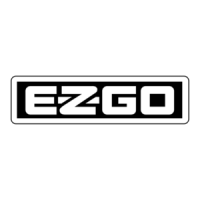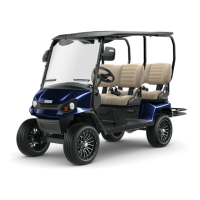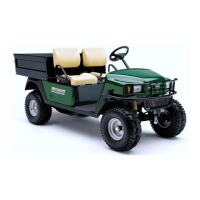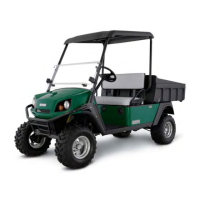Page H-2
Repair and Service Manual
B
BATTERIES AND CHARGING
Read all of Section B and this section before attempting any procedure. Pay particular attention to Notices, Cautions, Warnings and Dangers.
At Each Charging Cycle
To reduce the possibility of fire, never attach a
battery charger to a vehicle that is to be unat-
tended beyond the normal charging cycle.
Overcharging could cause damage to the
vehicle batteries and result in extreme over-
heating. The charger should be checked after
24 hours and unplugged after the charge cycle
is complete.
Before charging the batteries, inspect the plug of the
battery charger and vehicle receptacle housing for dirt
or debris.
Charge the batteries after each days use.
Monthly
• Inspect all wiring for fraying, loose terminations,
corrosion or deterioration of insulation.
• Check that the electrolyte level is correct and add
suitable water as required.
• Clean the batteries and wire terminations.
Electrolyte Level and Water
The correct level of the electrolyte is 1/2" (13 mm)
above the plates in each cell (Ref. Fig. 1).
Fig. 1 Correct Electrolyte Level
This level will leave approximately 1/4" - 3/8" (6 - 10
mm) of space between the electrolyte and the vent
tube. The electrolyte level is important since any por-
tion of the plates exposed to air will be ruined beyond
repair. Of equal importance is too much water which will
result in electrolyte being forced out of the battery due
to gassing and the increase in volume of the electrolyte
that results from the charging cycle.
Do not overfill batteries. The charging cycle will expel
electrolyte and result in component damage.
A battery being charged will ‘gas’ with the majority of
the gassing taking place at the end of the charging
cycle. This gas is hydrogen which is lighter than air.
Water and sulfuric acid droplets will be carried out of the
battery vents by the hydrogen gas; however, this loss is
minimal. If the battery electrolyte level is too high, the
electrolyte will block the vent tube and the gas will force
it out of the vent tube and battery cap. The water will
evaporate but the sulfuric acid will remain where it can
damage vehicle components and the storage facility
floor. Sulfuric acid loss will weaken the concentration of
acid within the electrolyte and reduce the life of the bat-
tery.
Over the life of the battery, a considerable amount of
water is consumed. It is important that the water used
be pure and free of contaminants that could reduce the
life of the battery by reducing the chemical reaction.
The water must be distilled or purified by an efficient fil-
tration system. Water that is not distilled should be ana-
lyzed and if required, filtration installed to permit the
water to meet the requirements of the water purity table
(Ref. Fig. 2).
Fig. 2 Water Purity Table
Vent Cap
Gas Vent
Vent
Expansion
Space
Plates
1/2” (13 mm)
1/4” to 3/8”
(6 mm to 10mm)
Electrolyte level should be at least
1/2” (13mm) above the plates and 1/4”
to 3/8” (6 to 10 mm) below vent
Impurity Parts Per Millon
Color...............................................Clear
Suspended.....................................Trace
Total Solids.....................................100
Calcium & Magnesium Oxides.......40
Iron.................................................5
Ammonia........................................8
Organic & Volatile Matter................50
Nitrites............................................5
Nitrates...........................................10
Chloride..........................................5
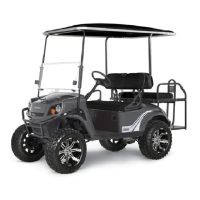
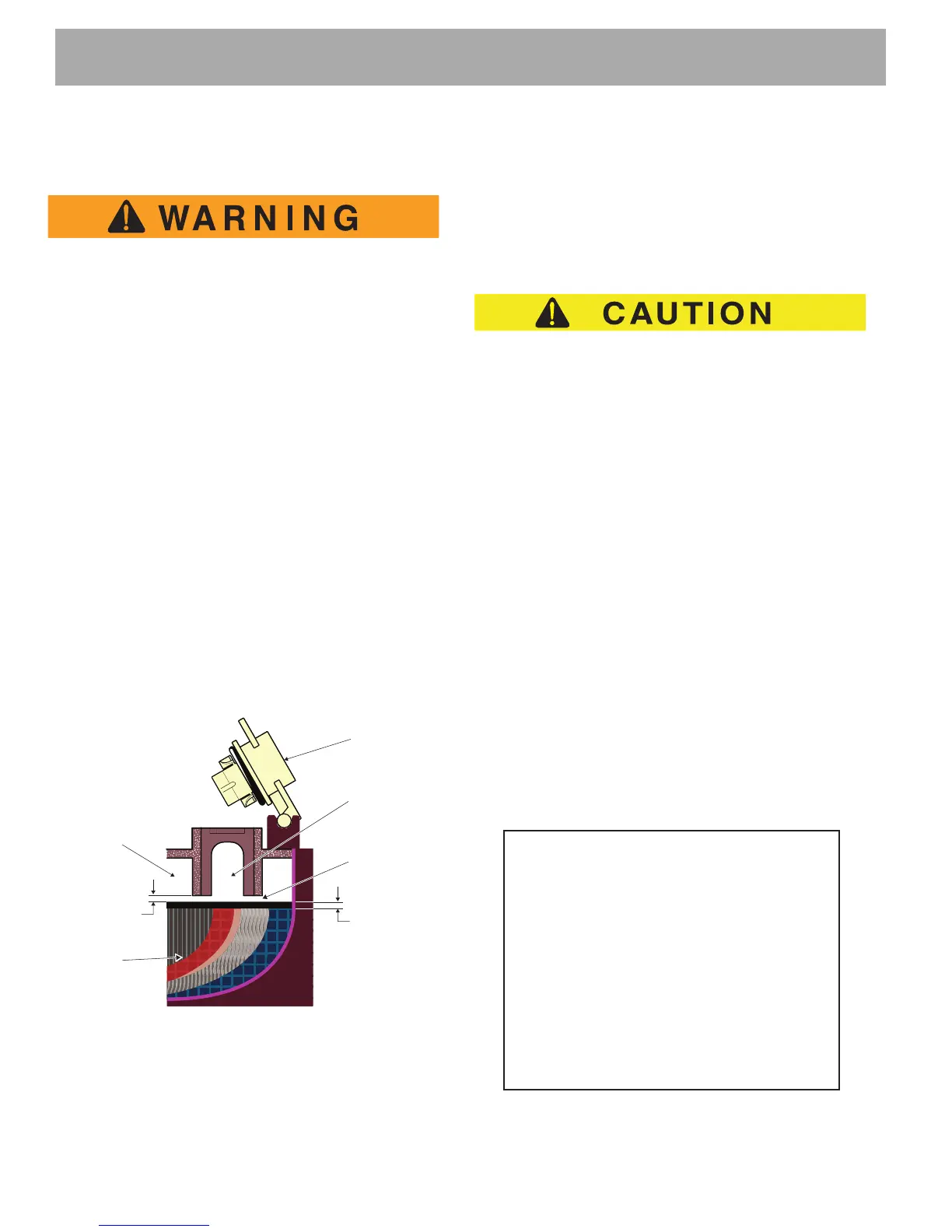